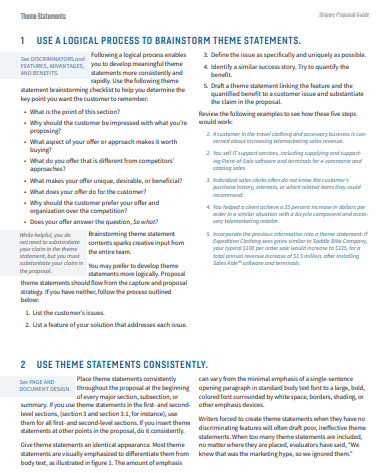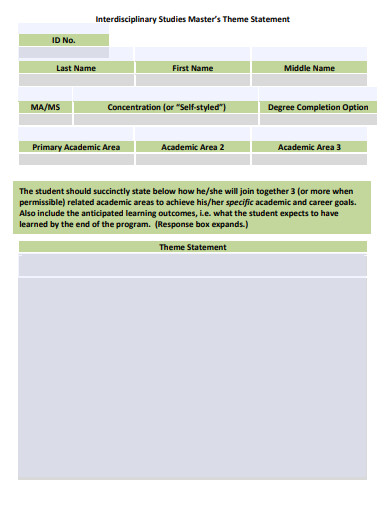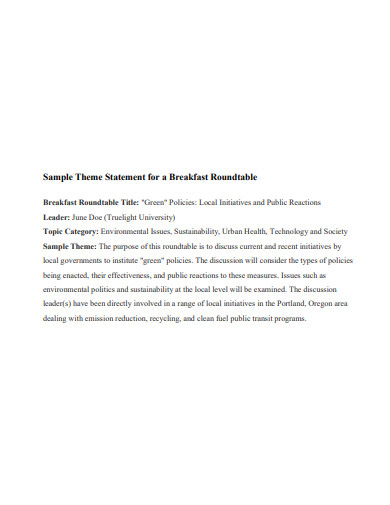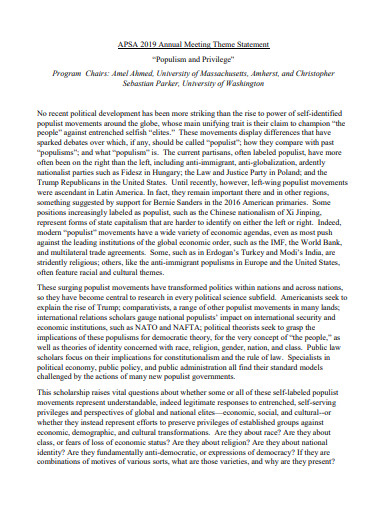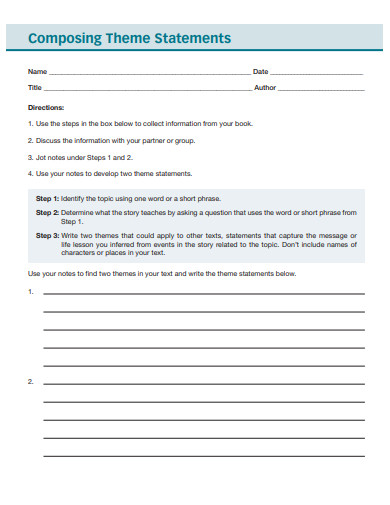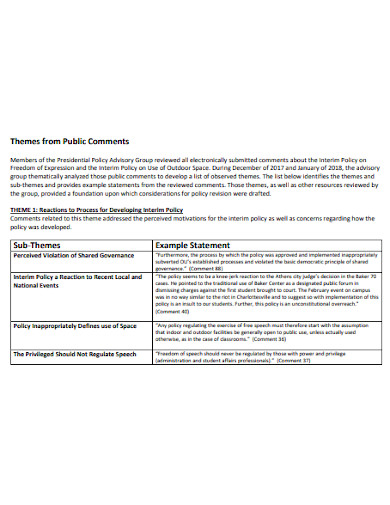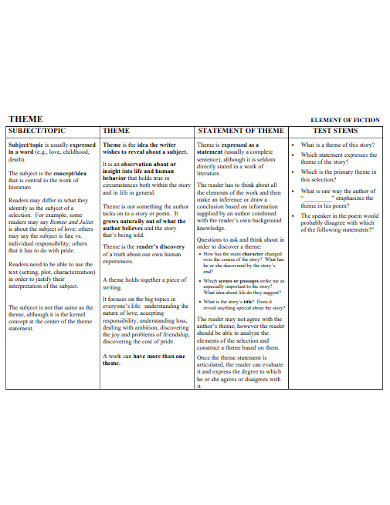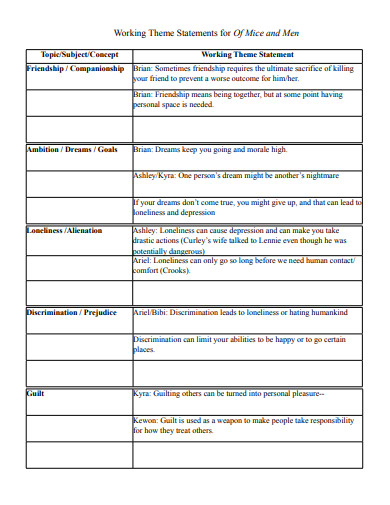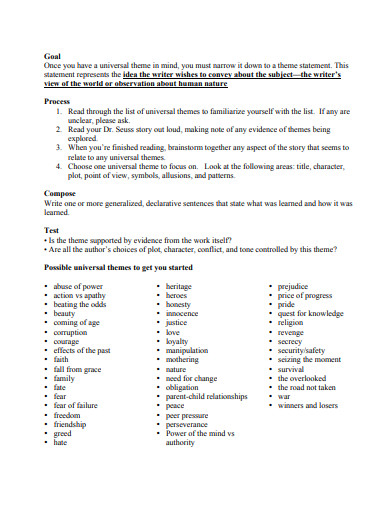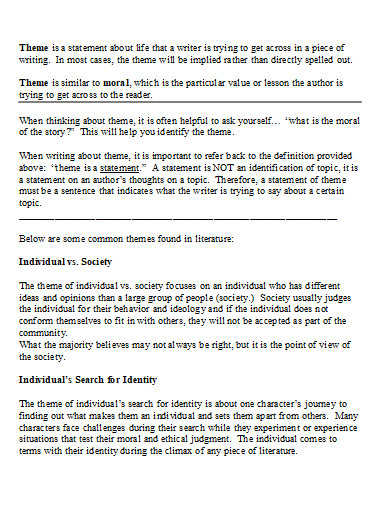10+ Theme Statement Examples to Download
Family, love, and friendship. When you think of these kinds of themes, what is often the first thing that comes to mind? Many would see this as an opportunity to write stories, articles, news, novels, or even journals. There are of course a lot of kinds of themes writers use to convey things in their writing. For students who take up creative writing know that these are the most common theme concepts or theme statements that are often written and used in such as these. You may be wondering why you need to make a theme statement when you want to write about something. To get the idea and the answer, check out examples of theme statements now.
10+ Theme Statement Examples
1. Theme Statements Template
2. Master Theme Statement
3. Sample Theme Statement
4. Annual Meeting Theme Statement
5. Composing Theme Statements
6. Themes from Public Comments Statement
7. Formal Theme Statement in PDF
8. Working Theme Statements
9. Universal Theme Statement
10. Loyalty Theme Statement Template
11. Theme Statement in DOC
What Is a Theme Statement?
What are theme statements? A theme statement is a brief or a short summary of the idea you want to talk about in your writing. The general concept of how you want to convey how you feel in the form of a theme. The theme statement is described as a means of explaining to your readers what you want to convey through the characters in the story. Common theme statements like love, family and friendship are often the type of themes that you encounter when reading or writing stories. Theme statements make the story easier to understand and easier to sympathize with the characters, the conflict and the general plot of the story. Think of birthday greetings, sympathy greetings, invitations. These examples often need theme statements to convey to the reader how you feel.
How to Write a Theme Statement
So you are tasked to write something. May it be a greeting, an invitation, or even a story. The important thing to remember is the theme. How you convey the theme in your writing will also matter. In order to get even the gist of how important the theme statement really is, here are steps you can read and follow to get an idea of how to write a theme statement.
Step 1: Understand What the Story or the Writing Is About
To make a theme statement, you must first understand what the story is about, or what the author is trying to convey. Avoid jumping into conclusions and assume that the theme may as well be one of those generic types. The best way to get a good theme statement out of an article or a story you are reading is to read and get the gist of it.
Step 2: State What the Theme Is About
When you have fully understood what the author is telling you through the written texts, it is time for you to state the theme they are conveying. However, if you are unsure of how to write down your theme statement about the story you read or how you want to convey it to your readers, go back to step 1. Understanding what you want to talk about to your readers or understanding what the story is in the form of the written texts.
Step 3: Make It Clear and Concise
Another thing to take notice of is to make it clear and concise. Whether you are writing or conveying the theme in the form of a statement, make sure to keep it clear and concise. Watch your literary jargon. Make sure that the jargon you are using can be interpreted by anyone or the general public.
Step 4: Keep Clear of Any Clichés
The last step is to steer clear of those cliché theme statements. The ones that are already very predictable that it loses its touch with your readers. Avoid them at all costs.
FAQs
What are theme statements?
A theme statement is a brief or a short summary of the idea you want to talk about in your writing. The general concept of how you want to convey how you feel in the form of a theme.
Why do you need theme statements?
They make your stories or your writing easy for your readers to convey what you are trying to tell them. In literature, they are used as a means of explaining what the story is about and how the characters feel throughout the story.
What are examples of themes?
There are a lot of examples for themes that are often found in literature. Here are a few of the famous themes.
- Love
- Family
- Justice
- Heroism
- Wealth
Family, love, and friendship. These are the most common of themes when you read a story or a novel. Theme statements come in handy as they help you convey or talk about what the story is without having to make it obvious. When you think about making a story or writing, think about a good theme statement to go with it.



